Week 4 Film Review: Inside the mind of Deshaun Watson
By Tyler Arthur
American Football is a complicated sport and the people who understand it the most are the ones doing it, leaving us watching to try and work out what’s going on. The true football minds are often hidden away, which is why Sean McVay remembering plays from six years ago goes viral. This week, a reporter asked a question to Houston Texans superstar quarterback Deshaun Watson, in the aftermath of a loss to the Carolina Panthers and he answered it in a way which was very interesting.
Some people reacted in their high and mighty ‘duh, you guys should already know this’ way, but generally there was a really positive response, appreciating him actually explaining what he saw on a plays and what the defense did that gave him problems, as well as taking responsibility for missing throws when they beat it.
Deshaun Watson explains Carolina's defense in 66 seconds. pic.twitter.com/8Fn4OAKHk3
— Rivers McCown (@riversmccown) September 29, 2019
Watson outlined the way that the Carolina defense were playing in their cover 4, and was honest about his feeling that he missed two massive opportunities to go deep behind the coverage.
His quote reads:
“It’s cover 4… So, what the safeties are doing, they’re playing deep and they’re guarding No. 2. Corners sink and they trap two. So, what they’re doing is keeping everything in front. The linebackers are playing anything that crosses, (Middle linebacker Luke) Kuechly is playing in the middle. He stops everything that crosses the middle. He jumps everything there and the safeties are charging on number two.
“So, if the safeties are playing low we can’t take that. We have to hit double moves. We did the post because (safety Eric) Reid stepped up on two with the out, over the top. I didn’t hit it. Same thing with Hop, in-route, safety jumped up. He went vertical, I didn’t hit it. That’s the only two. After that, they played back, cover 2, six, buzz, which is safety, Reid, comes in between Kuechly and the outside linebacker, he plays deep. I’ve got to get rid of the ball.”
In this week’s film review we’re going to take a look at those opportunities – how the Texans created these chances, and whether their quarterback’s assessment was accurate. Should they have won this game?
The first play came toward the end of the second quarter, when the Texans called a play specifically to target the four-high shell that they had been having trouble with, while trailing 10-3.
Let’s take a look at the defense that not only caused issues for Houston, but almost gave them the opening to fight back and tie it up.
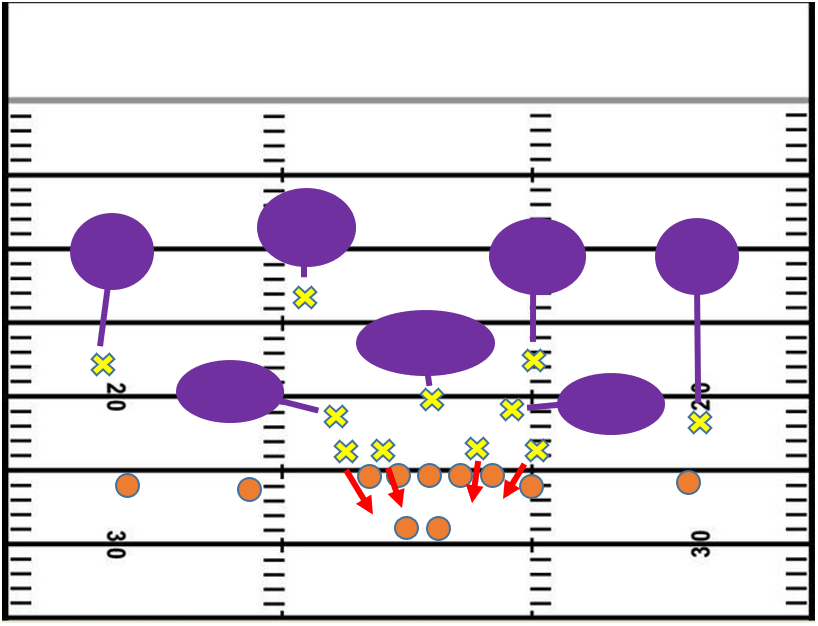
As usual the Panthers rushed four and had their three linebackers sat behind them, playing major roles in their zone defense. Just as Watson explained, the three linebackers are underneath, covering the short-intermediate routes, with Luke Kuechly in the middle, directing the troops. The two outside linebackers in the 4-3 have license to go as wide as they need to, and will often make tackles out into the flat zone if the ball gets dropped underneath. The main element of the cover 4 is the way that the cornerbacks and safeties play deep, protecting a quarter of the field over the top each.
The pass rush is fairly passive, and rushes on the outside, to contain Watson in the pocket. They had clearly game planned to force him to win the game through the air, which is what they inadvertently gave him two chances to do.
The thing which makes a four-high shell beatable, however, is the nature of the responsibilities that each of the defensive backs have. Watson mentioned the way that the safeties are guarding the number 2 receiver when they face a two-by-two formation as they were on this play. The reason that this is important is that it makes this coverage naturally susceptible to routes which move from one quarter of the field to another – think switch routes, or post routes. If a safety is stopping the potential vertical route from the two receiver, it is very difficult to play help when all of a sudden the speedster who was on the outside breaks in over the top of you.
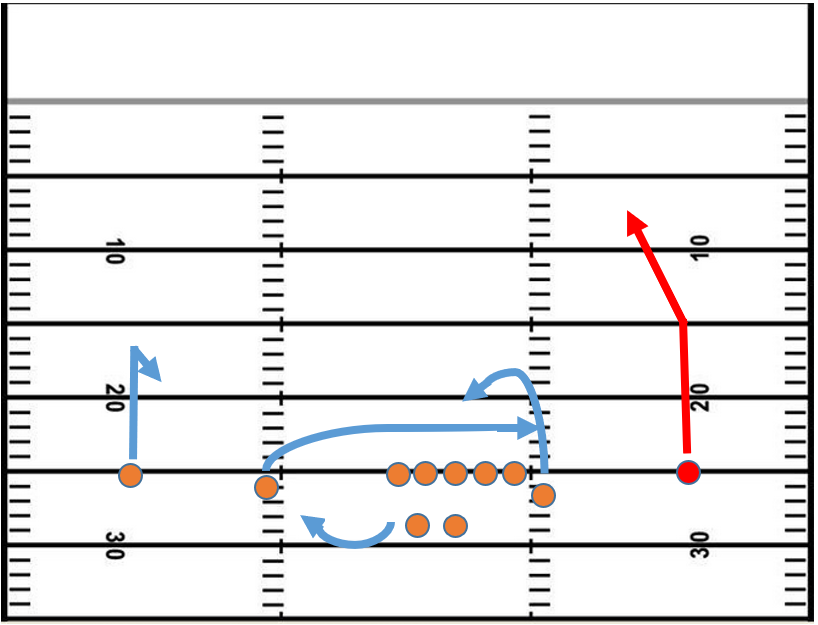
Like I said before, this play call from the Texans was a really good one to attack the coverage. The 2 receiver runs vertically but then sits down, with a post route over the top, to the shorter side of the field. To an extent, this is basically just a post route to beat cover 4 and then the rest of the play looks to be doing its own thing. The drag route underneath from the left side is good against man coverage, and you could throw the ball to Hopkins on the backside if his cornerback is backpedalling a bit too fast. All that it takes for this to give Will Fuller a chance is that crossing route catching the safety’s eye for just a second.
Watson (and therefore his coaches too) saw the opportunity to get it in behind, and this play call gave them a real opportunity. As was heard in the quote from the post-game press conference, Eric Reid stepped up towards the crossing route, and it gave Fuller a direct one-on-one race with the cornerback on his skinny post. This post pattern wasn’t run with a special move, no cheeky body feints or head movement – he just ran it, hard. The reason that the post is so deadly if the safety doesn’t help, is because it not only challenges the defensive backs to get deep and keep up with a speedy receiver, the break also takes him inside where he has ¾ of a field’s worth of leverage to exploit. As the deep threat Fuller breaks beyond his man, he has a couple of strides on the only defender who is able to stop him, and is wide open for a would be (should be) touchdown.
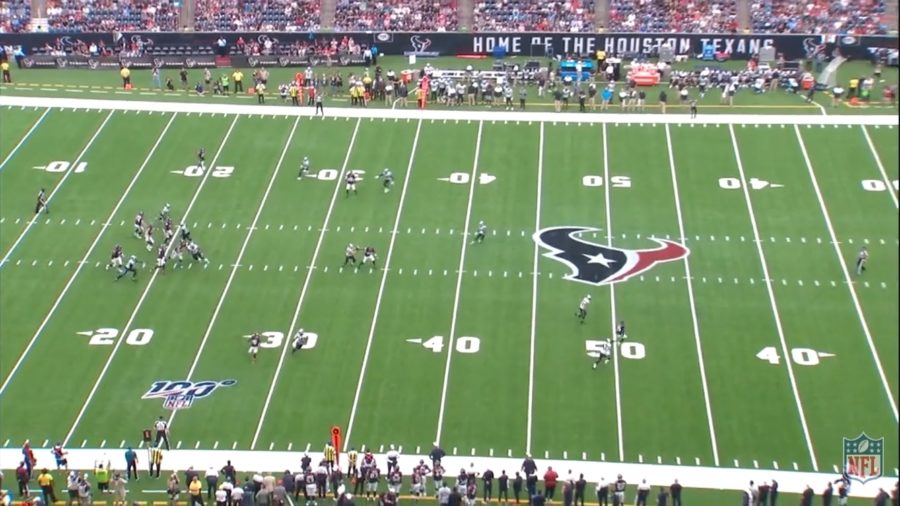
Here is a look at the moment that Watson threw the ball. Not only does Fuller have significant inside leverage on his cornerback, he is already a couple of yards past them and at a full sprint beyond their supposedly deep zones. But as he admitted, the franchise QB missed him.
The Texans couldn’t do anything, and went into halftime after missing out on this opportunity, down by 7 to a team they were capable of beating. The plan for the second half wasn’t drastically different, but they needed to execute when they had chances.
One thing we do know for sure, every single person in that passing game was well aware that there were chances to be had to break the Panthers coverage.
Within less than two minutes of the second half, they had that second chance.
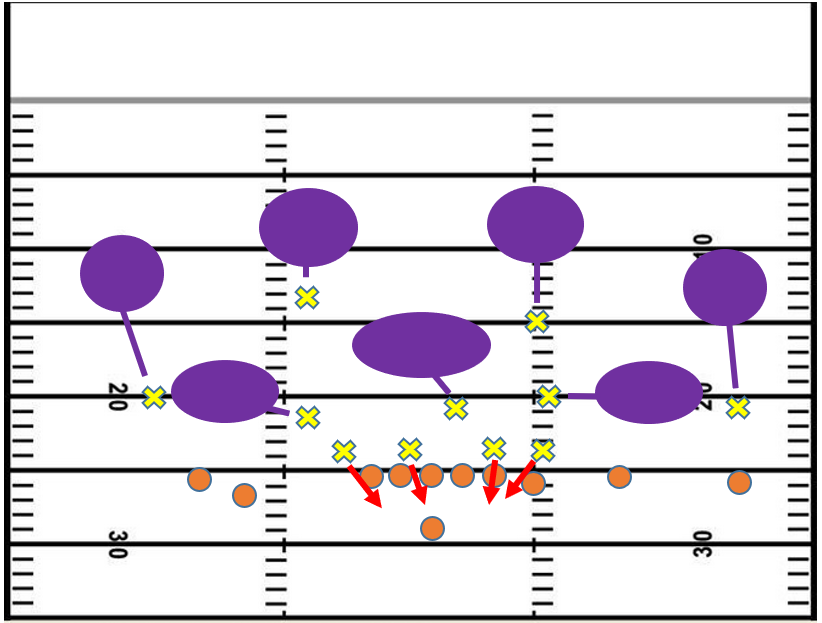
Once again, the Carolina defense is in a very simple and standard (same as earlier) cover 4. This time they are even more clearly in a cover four, because they aren’t disguising their two high safeties. In the first play they had one much closer to the line of scrimmage, but here, starting the second half, they’re pretty obviously in either a cover 4 or 2, as long as they don’t rotate at the snap – which they don’t.
The Texans motion their running back out of the backfield and end up in a five-wide formation with the three-receiver side to the QB’s right, and a slot-stack to his left.
Now here comes the fun part.
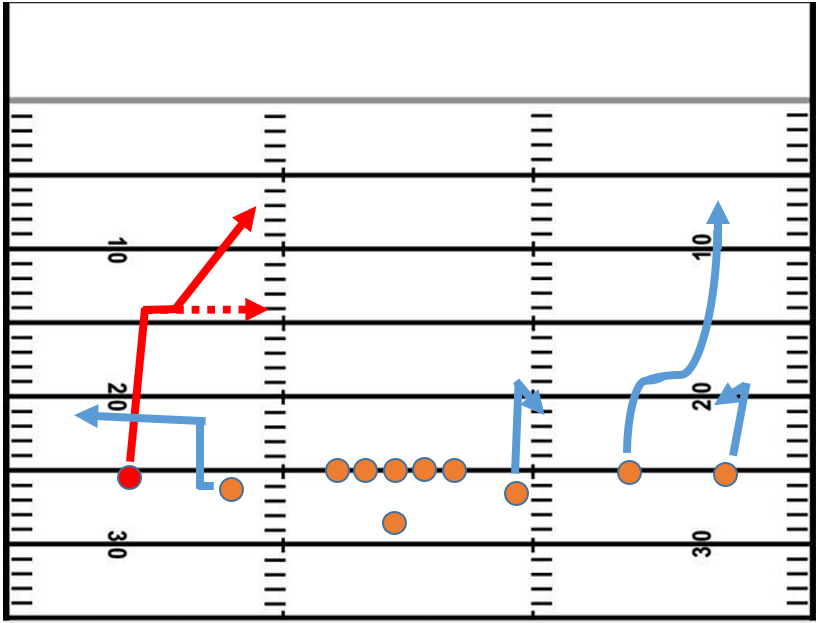
This play takes a second to wrap your head around but it shows how close the Texans were to making their opponents pay. The offensive play call is a nice little switch concept on the far right of the field between the running back who emptied out, and the 2 receiver, with the 3 receiver occupying a linebacker on a curl route. This switch concept attacks the cover 4 by turning it into a cover 2 / man coverage [I know how confusing that sounds] in terms of responsibilities. On 2nd and 18, the cornerback doesn’t want to give up any yards after the catch, and so when his responsibility doesn’t go vertical, he sits, and the switch route gets behind him.
Once the safety who is responsible for 2 sees that he is running the out-and-up, he immediately switches into a man-coverage to stop him exposing the cornerbacks deep zone down the sideline. And that, is what gives DeAndre Hopkins a chance to do something awesome.
As I’ve attempted to demonstrate on the play art, there is an out route from the 2 to the offensive left, with Hopkins running a dig route, but which he turns into an unscripted post route. As we know, and have spoken about already, the safeties are playing the inside quarter vertically. It starts with the slot, but when he runs an out-breaking route, the safeties eyes switch to DHop.
Hopkin’s cut on the dig route draws the safety down, as he attempts to break towards the ball to take away the in-break, he actually gives one of the best receivers in the entire league a chance to get behind him, which he takes with no invitation. He converts his dig into a post-route, which (on top of the explanation I’ve already given for why the 8-route gets open against cover 4) is even more open because of the fact that the opposite side safety has turned to face the sideline while chasing the switch route. Hopkins is legitimately wide open.

As you can see in this screenshot, Hopkins has acres of space, with yards of inside leverage on his man, after he slips behind the safety, and when Watson throws this football it looks like it should be at least a big gain, and probably a touchdown.
But, for the second time in the game, he missed.
As Watson accurately explained, after this play they had scared the Panthers out of their cover 4 and couldn’t get the win against the stout defense. The final score was 16-10.
There is a beauty to the way that Deshaun Watson explained exactly what the Panthers were doing to prove he knew what to do, and the honesty in which he admitted he just didn’t make the throw. It’s just as awesome to catch a glimpse into the mind of a superstar quarterback, and what he saw in that moment.
As soon as I saw the clip, I wanted to take a look at the plays, and it turns out that what he said was accurate, they got chances to expose the coverage and didn’t take them.
We don’t just look at the flashy successful plays, we look at whatever was interesting that week, and what is more interesting than seeing things through the eyes of an incredibly talented young QB for a couple of plays?

Tyler Arthur
NFL Film and Prospect Analyst
A graduated Journalism student, Tyler also writes for Read American Football and Gridiron Hub. He played Wide Receiver and eventually Quarterback for his university team at DMU, and is now using his knowledge and passion for learning to dive deeper into the analysis of X’s and O’s in the NFL.
Image credit: Aaron Doster-USA TODAY Sports
